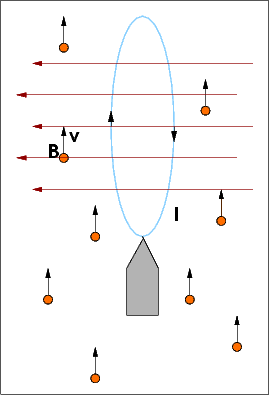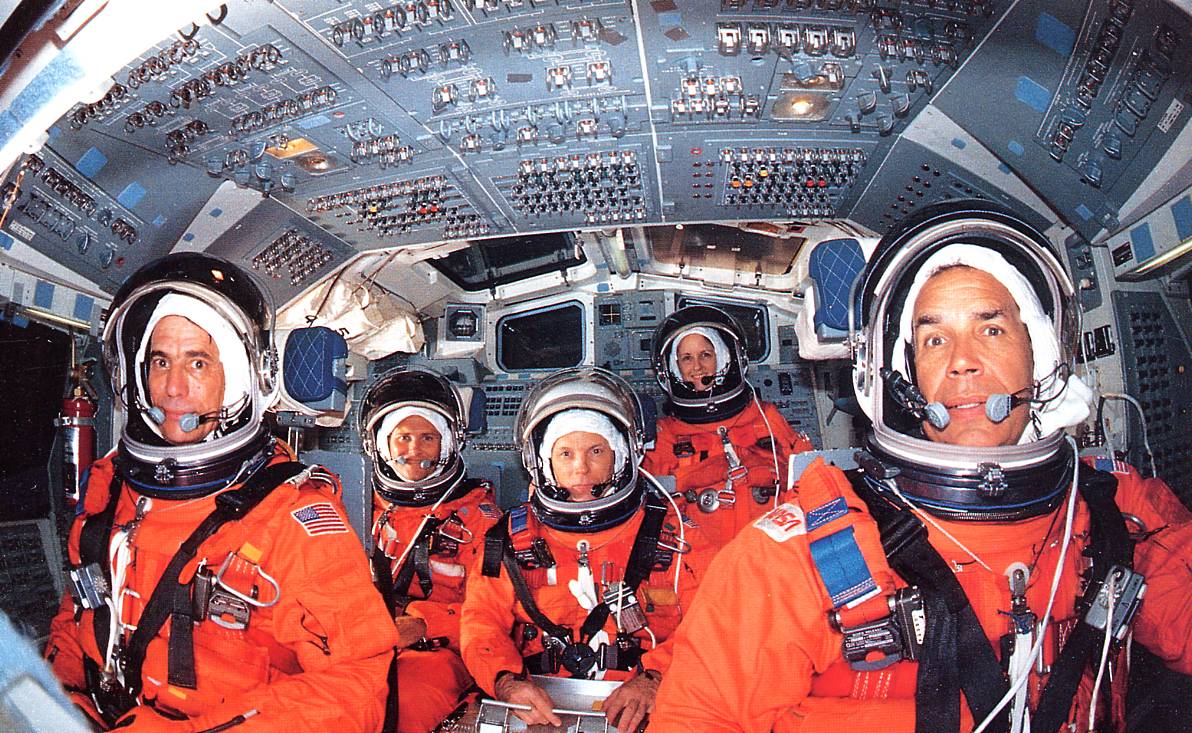Here we come to the last (for now) installment of our series on using the Mission Control model for future spacecraft crews. Today, we will look at a fully staffed Tactical Rocket on a mission of space superiority.
First of all, let's do a recap of the
Heinlein Rocket and what goes on in space combat. There are certain conventions I'm assuming that have to do with the physical limitations and economic realities of using crewed rockets or even rockets at all, when missiles and small robotic drones would be more efficient and affordable. Admittedly, the justifications for some of these conventions are rather arbitrary; Meta-Fiction, in the form of
Burnside's Zeroth Law, makes certain assumptions inevitable.
Okay, so the
Black Desert setting assumes that the
Plasma Sails used for propulsion on IPVs also protect the spacecraft from cosmic rays, solar flares and fast moving space debris. Assuming that means that the IPV can casually shrug off lasers, nukes, kinetic kill vehicles and what have you. This is great for the IPVs, but bad for games and dramatic plots.
Now we
have learned of a way to take out an IPV:
The Kintzi Lesson tells us that the Fusion Torch on a rocket will cut through pretty much anything if it can get close enough. This means reusable rockets instead of missiles, however; fusion reactors will be much too valuable to waste on one-way trips.
This still does not dictate that we need a fragile organic crew to to man any of these rockets. Indeed, In
BD, a squadron of rockets set to attack an IPV will only have one crewed rocket in the entire formation, for Command and Control.
Electronic Warfare being what it is, it will take a flesh-and-blood crew riding into the fray with the drones to keep them from being fooled by all the razzle-dazzle. The rest of the rockets will, however, be identical to the manned rocket, as a way to protect the crew.
As we all know,
there ain't no stealth in space. Period. You may disagree, and may have a really good reason for doing so; if so,
please read this before leaving a comment. I'm not trying to be a spoil sport, I'm trying to make SF cooler than it currently is by making it actually possible.
Besides, having a Wing of drones surrounding a single C and C rocket makes the idea of using
decoys practical. Since we have all of those autonomous rockets in our attack wing anyway, they might as well all be identical, to make finding the boss rocket harder. Add Electronic Warfare to the mix, and the crew will be reasonably safe from the risk of being singled out.
At this point, we have enough info to start thinking about this Command and Control crew. We need a core crew to actually fly the crewed
Heinlein, and additional crew to direct the drones and keep on top of EW and insure communication is maintained between the drones and the command rocket.
The core crew is easy; we figured that one out
yesterday. It may or may not suprise you that finding info on field operating Unmanned Aerial Vehicles was a little difficult. I did find
this smallish doc online that says that up to four modern UCAVs can be operated by a pair of people. For the purposes of
Black Desert, these positions will be:
- Drone Operator (DO): This officer only directly controls the drones in the event of EW interference, ionization blackout or other problems. Use the Spacecraft Operation Skill.
- Mission Payload Operator (MPO): In charge of deploying Kinetic Missiles, programming the defensive lasers, and firing the Fusion Torch. Use the Gunnery Skill.
Now I didn't know about any of this stuff when I first designed the
Heinlein. Nevertheless, I included 11 crew positions in the deckplans to account for a fully armed and combat ready craft. Assuming a minimum of 5 to actually fly and fight the craft, that leaves three pairs of Drone Operators available for up to 12 drones.
So there you have it, RocketFans; we have now outlined the crew compliments for fully staffed IPVs, basic small spacecraft, and Command and Control craft in a space combat scenario. As always, comments and questions are welcome.
The rest of this week will be updates only - I gotta get to work on this month's
Ship of the Black Desert, my
Westward artwork, and finalizing the design on the Character Sheet. Next week we will be discussing the Missile Craft again, with a look at how the Artificial Gravity will work. Should be lots of fun.
This brings up an important question: Would you guys like to see a supplement on the IPV soon? My original plan is to publish a PDF on a
NuRom Vardo in March, to be the first big offering after the Core Rules. Make no mistake, it will be a big supplement, akin to OD&D's
Keep on the Boarderlands in terms of scope but with more detailed info on the NPCs.
I've had a few of you ask for a doc on the IPV; what worries me is that info in the supplement may change as the Core Rules come into tighter focus. What I
can do is put out the IPV in PDF only by around August. The nice thing about working with RPGNow is that I can edit the PDF once the Core Rules are finished and anybody who purchased the product will get an updated copy for free. I can then offer the IPV in print with a clear conscience.
So what do you say, RocketFans? Would you like to get your hands on an IPV by August? Leave a comment below.
See you tomorrow!
































